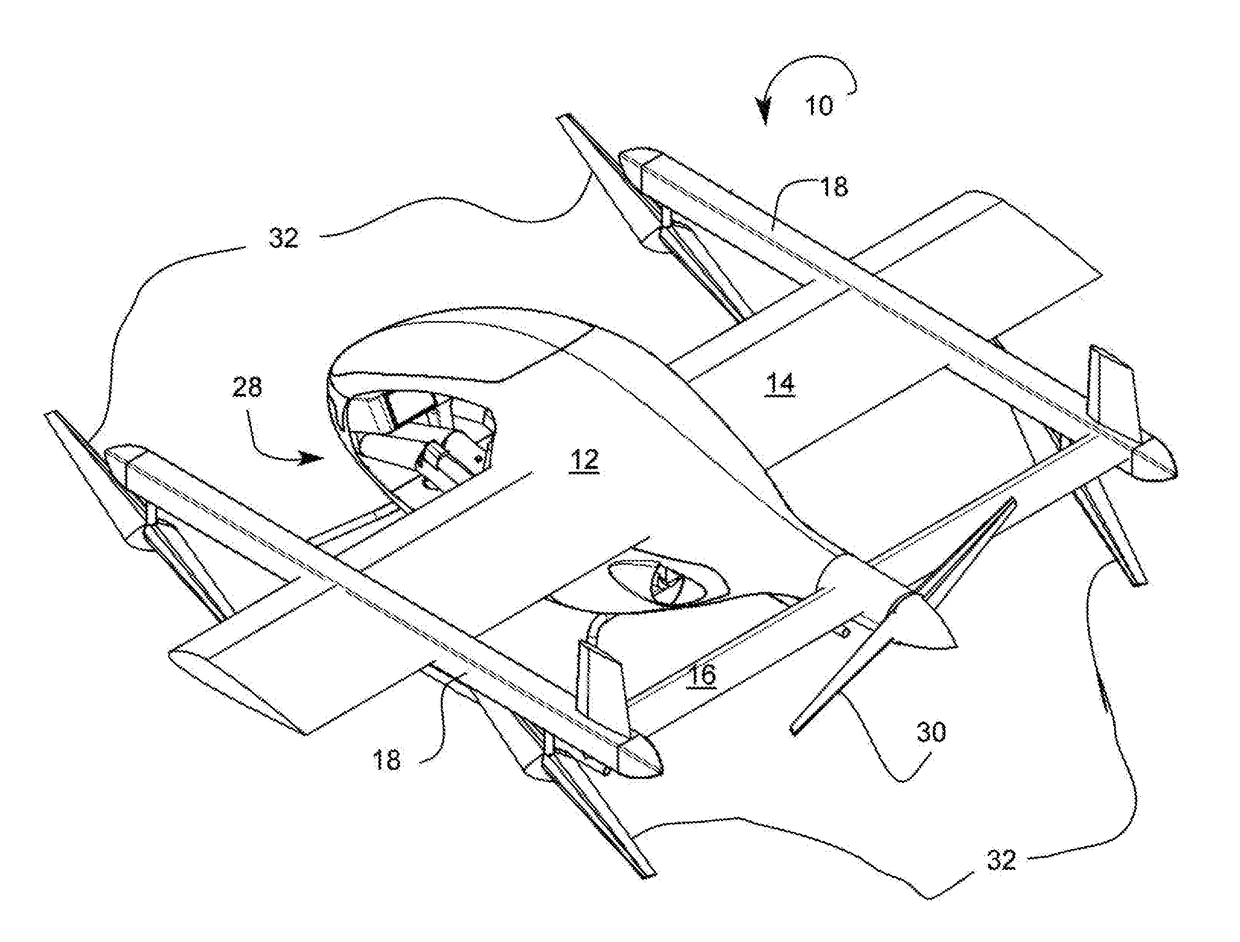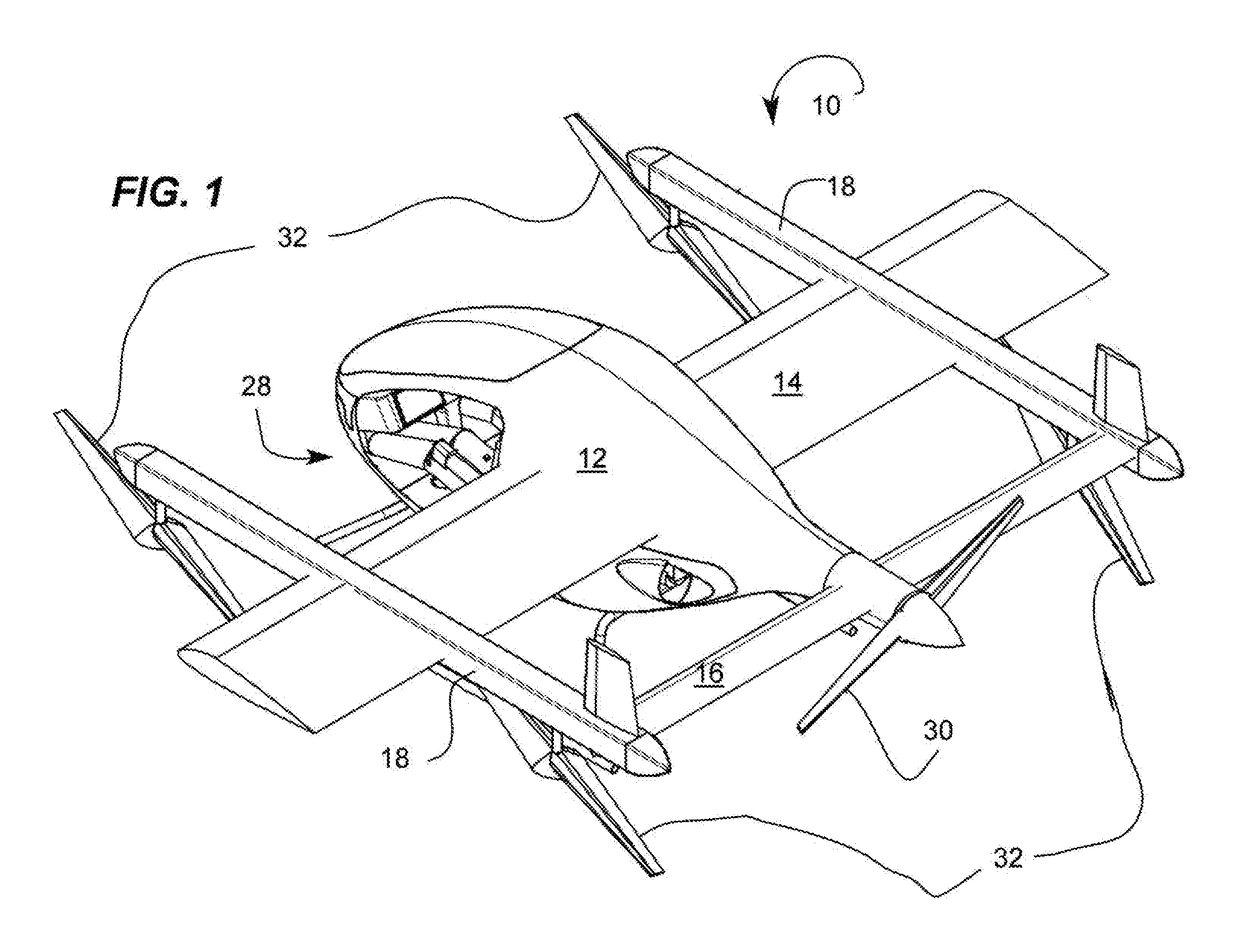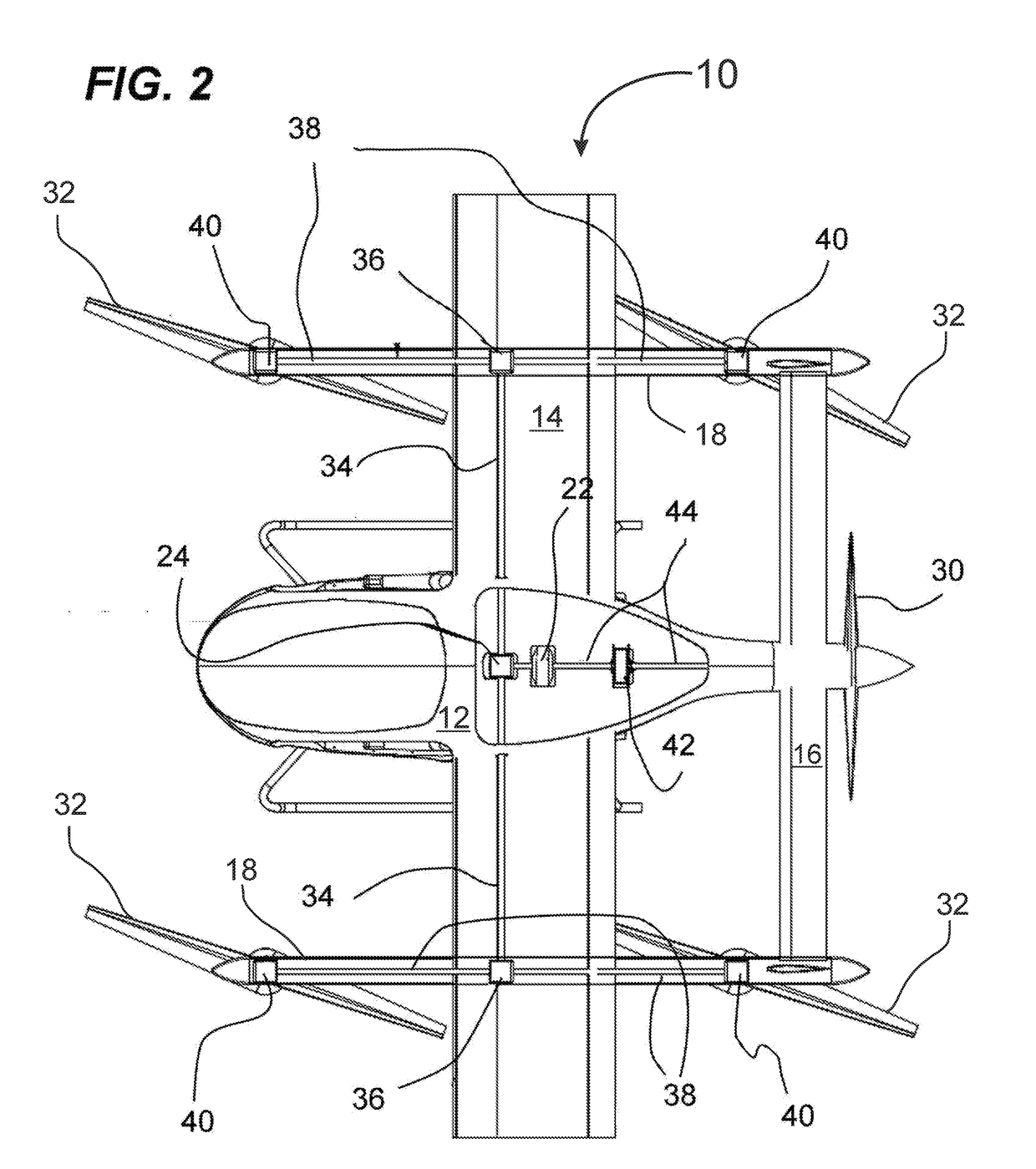Vtol high speed aircraft
a high-speed aircraft and vertical takeoff technology, applied in the direction of aircrafts, rotorcraft, etc., can solve the problems of reducing the speed of sound, reducing the lift, and reducing the speed of forward moving blades, so as to reduce drag
- Summary
- Abstract
- Description
- Claims
- Application Information
AI Technical Summary
Benefits of technology
Problems solved by technology
Method used
Image
Examples
Embodiment Construction
[0010]The following description is provided to enable any person skilled in the art to make and use the invention and sets forth the best modes contemplated by the inventor of carrying out their invention. Various modifications, however, will remain readily apparent to those skilled in the art, since the general principles of the present invention have been defined herein to specifically provide a VTOL high speed aircraft.
[0011]FIG. 1 is a perspective view of a VTOL high speed aircraft 10 according to an embodiment of the present invention. Referring now FIG. 1, the VTOL high speed aircraft comprises a fuselage, a first pair of wings 14, and a second pair of wings 16. The first pair of wings is the primary wings positioned approximately to the center of the fuselage, and the second pair of wings is the secondary wings forming the tail of the aircraft. The first and second pairs of wings are joined by a pair of booms 18.
[0012]In one embodiment, a drive propeller 30 is provided and at...
PUM
 Login to View More
Login to View More Abstract
Description
Claims
Application Information
 Login to View More
Login to View More - R&D
- Intellectual Property
- Life Sciences
- Materials
- Tech Scout
- Unparalleled Data Quality
- Higher Quality Content
- 60% Fewer Hallucinations
Browse by: Latest US Patents, China's latest patents, Technical Efficacy Thesaurus, Application Domain, Technology Topic, Popular Technical Reports.
© 2025 PatSnap. All rights reserved.Legal|Privacy policy|Modern Slavery Act Transparency Statement|Sitemap|About US| Contact US: help@patsnap.com



